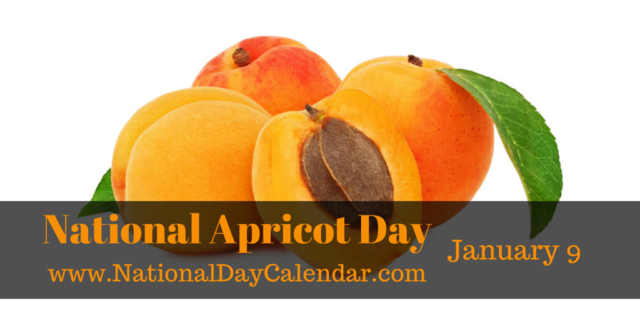
Apricot lovers from all over the United States observe National Apricot Day every year on January 9th.
The apricot’s velvety flesh is similar to that of their relative the peach. The texture of the golden-orange fruit is more firm and the flavor more tart, though. This versatile fruit is enjoyed fresh, canned and dried.
Apricots are found the world over, but originated in northeastern China near the Russian border in ancient times and were later introduced to Europe and Armenia. The apricot found its way to North American when English colonists settled in Virginia. The fruit was brought further west by Spanish explorers and missionaries where the fruit is grown commercially today.
The apricot tree can grow to 45 feet if left unpruned. It produces white, pink or red blossoms and is a winter hardy tree. However, early frosts can damage the fruit.
Fresh apricots are packed with nutrients. A 1 cup serving of apricot halves contains 60% of the daily allowance of Vitamin A, and 26% of the daily allowance for Vitamin C. Other vitamins in this low-calorie snack include Vitamin B-6, Magnesium, Iron and Calcium and is also an excellent source of fiber.
With its unique flavor, the apricot is a versatile ingredient lending itself to both sweet and savory dishes. Perfect for snacking, apricots are best fresh off the tree but are also found in markets the year round. Dried, they are delicious in healthy granola or a salad.
HOW TO OBSERVE
Try these flavorful apricot recipes:
From Foodimentary.com:
- In Latin, apricot means ‘precious’.
- The apricot, discovered about 4,000 years ago in China, was introduced to the United States in the 18th century.
- Brought to California by Spanish explorers, the apricot quickly became a popular crop.
- Today, apricot farmers in California produce more than 95 percent of the apricots grown in the United States.
- Choose an apricot that’s plump and that responds to the slight pressure of your thumb. It should be slightly soft.












